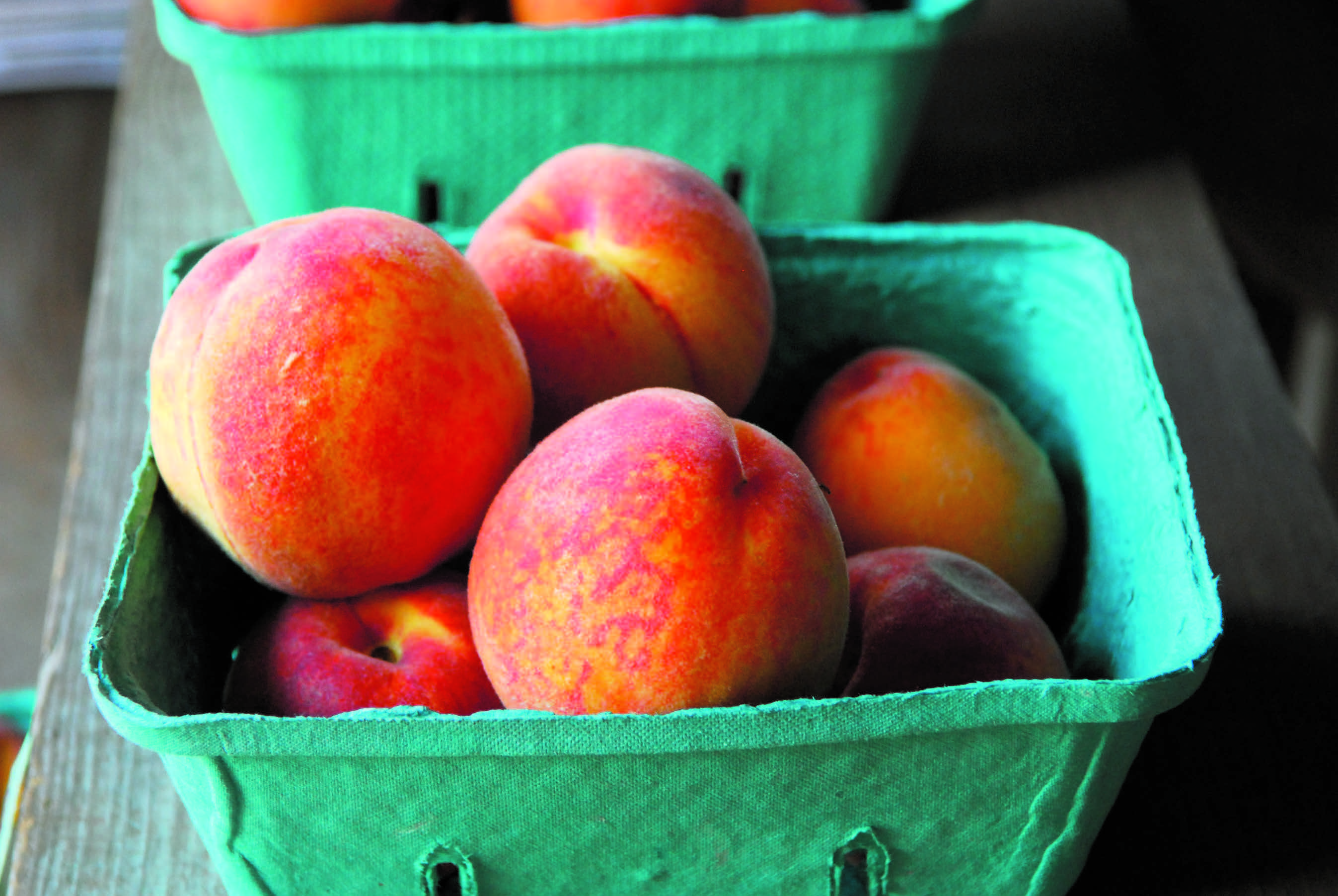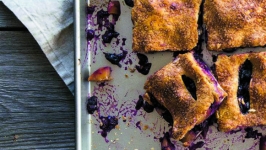EDIBLE HEALTH: KEEN ON PEACHES
A juicy Jersey fruit brimming with benefits
“If you pick a peach too early and let it ripen on your counter, it will get softer but not sweeter.”
—Pam Mount, Terhune Orchards, Princeton
Nothing envelops the senses quite like a perfectly ripe peach. From its sunny hue to its delicate fuzzy skin that seems to magically bind its shape, a juicy peach can provide welcome respite on a summer’s day. Peach season in New Jersey starts around the first week of July, depending where in the state you live. Most varieties are semi-freestone or freestone peaches, which indicate how easily the pit is removed.
“Not many people grow clingstone peaches because the pit clings to the flesh and you have to eat them more like an apple,” says Pam Mount of Terhune Orchards in Princeton. “We have semi-freestone peaches in early summer, and freestone peaches in August whose pits pop right out.”
Though these varieties may seem more convenient to eat, it goes without saying that nothing can get in the way of devouring a perfectly ripe peach.
Mount says that the trick is to find tree-ripened peaches, as these will have the best flavor.
“Starch converts to sugar, but it stops doing that once the fruit is removed from the tree,” she says. “If you pick a peach too early and let it ripen on your counter, it will get softer but not sweeter.”
Another way to tell if a peach is ripe is by its color. “If you look underneath the blush of the peach, it has to be yellow,” Mount says. “If it’s green, then it’s not ready. The last part of the peach that turns yellow is right around the stem. If you see that it’s still green, it’s not ready to pick.”
But this fruit offers more to enjoy besides its wonderful taste. “Fruit that’s orange in color—it is an indicator it contains beta carotene, which is an antioxidant,” says Deanna Schweighardt, a registered dietitian nutritionist and outpatient nutritionist at Saint Barnabas Medical Center in Livingston. “Additionally, peaches contain carotenoids like lutein and zeaxanthin, which are antioxidants specific to eye health,” she says, noting that they become more bioavailable when cooked.
Athletes take note: Peaches contain 285 milligrams of potassium (a banana has approximately 400 milligrams). Potassium is an electrolyte that helps with chemical balances in the body and improves muscle contractions. Peaches are also a good source of vitamin C and contain about 1 milligram of iron—which may sound low, but is significant. “Vitamin C helps with iron absorption. Eating foods with this combination is great for those with low iron stores,” says Schweighardt. “Iron is important because it helps transport oxygen throughout the body.”
Perhaps one of the most talked about aspects of the peach is the skin, and not just for its unique texture. The skin of one peach contains 3 grams of heart-healthy soluble fiber. Yet some folks hesitate to eat the skin since peaches are on the “Dirty Dozen” list, a ranking produced by the Environmental Working Group, a non-profit educational organization. The list indicates fruits and vegetables that contain the most pesticide residue. “There are a number of diseases one has to prepare for in order to have a successful peach crop in New Jersey,” says Norman Lalancette, Extension Specialist in Tree Fruit Pathology at Rutgers Agricultural Research and Extension Center in Bridgeton. “Some of the most common are bacterial spot, brown rot, peach scab and peach rusty spot.”
Lalancette says that farmers are constantly monitoring for heat and humidity—which is common during the summer in New Jersey— as it creates the perfect conditions for pests and disease. It is also why you won’t find many certified organic peach orchards in New Jersey, as opposed to California, where the humidity is lower. “You have to prepare for the changing conditions and anticipate when and if to spray,” he says. “Regarding the ’Dirty Dozen’ list, it’s a bit misleading since some pesticides are more toxic than others, and this list lumps them all together without considering known safety standards.”
Spraying alone, however, isn’t the best method for farmers to keep pests at bay. Lalancette notes that many farmers use IPM (integrated pest management), which is a scientific approach that gives farmers the data they need to make informed decisions, including whether to spray.
As for the safety of the sprays, Lalancette notes that some sprays have such low toxicity that farmers are permitted to harvest the same day. “Over the years the EPA has pushed manufacturers to create low-risk materials with low toxicity, and the sprays today are much tamer than they were 50 [to] 60 years ago.”
Concerned consumers should ask farmers for details.
This year’s peach season is predicted to be bountiful, and there’s no better place than the Garden State to enjoy them fresh from the orchard.






